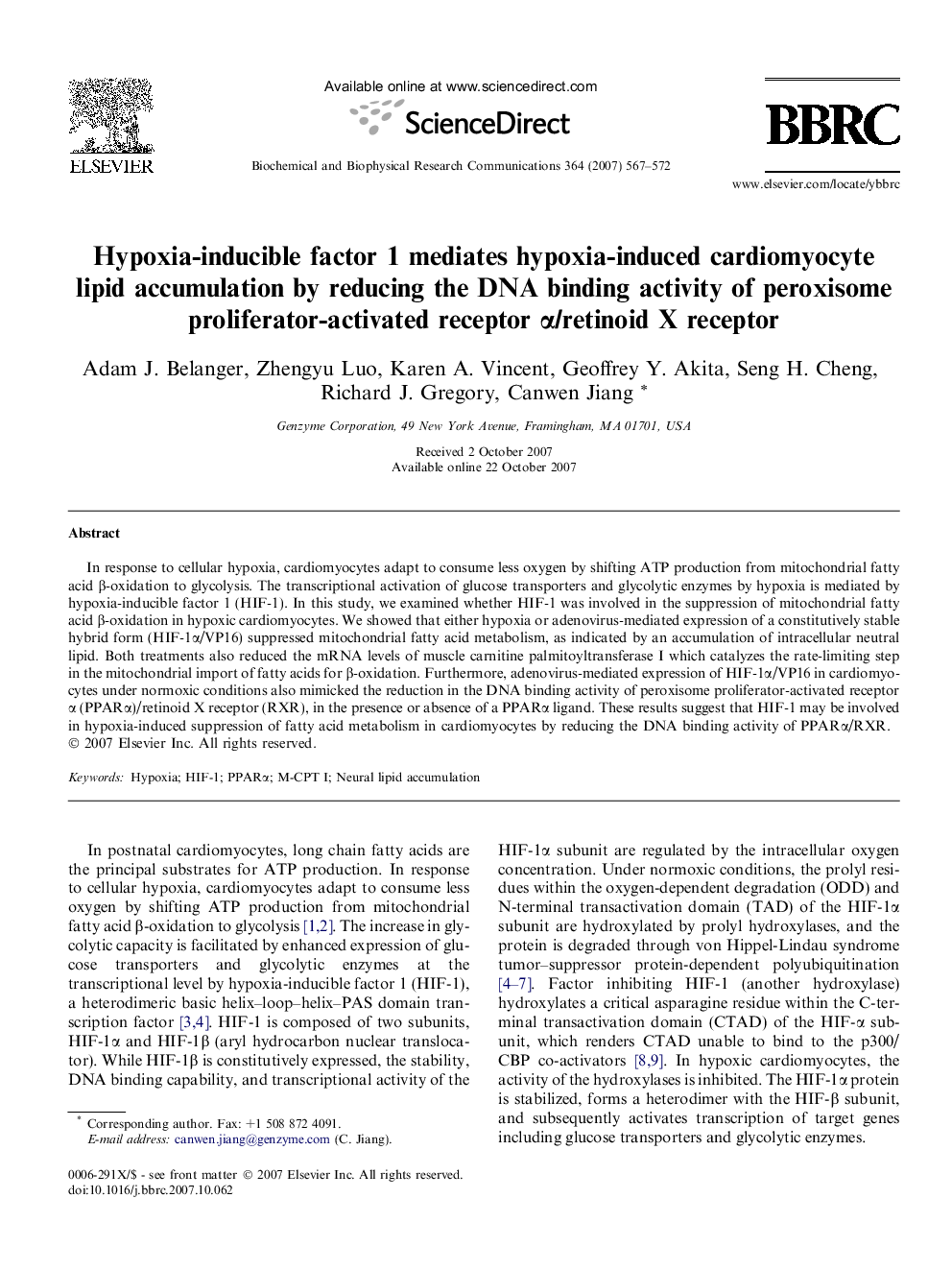| Article ID | Journal | Published Year | Pages | File Type |
|---|---|---|---|---|
| 10766969 | Biochemical and Biophysical Research Communications | 2007 | 6 Pages |
Abstract
In response to cellular hypoxia, cardiomyocytes adapt to consume less oxygen by shifting ATP production from mitochondrial fatty acid β-oxidation to glycolysis. The transcriptional activation of glucose transporters and glycolytic enzymes by hypoxia is mediated by hypoxia-inducible factor 1 (HIF-1). In this study, we examined whether HIF-1 was involved in the suppression of mitochondrial fatty acid β-oxidation in hypoxic cardiomyocytes. We showed that either hypoxia or adenovirus-mediated expression of a constitutively stable hybrid form (HIF-1α/VP16) suppressed mitochondrial fatty acid metabolism, as indicated by an accumulation of intracellular neutral lipid. Both treatments also reduced the mRNA levels of muscle carnitine palmitoyltransferase I which catalyzes the rate-limiting step in the mitochondrial import of fatty acids for β-oxidation. Furthermore, adenovirus-mediated expression of HIF-1α/VP16 in cardiomyocytes under normoxic conditions also mimicked the reduction in the DNA binding activity of peroxisome proliferator-activated receptor α (PPARα)/retinoid X receptor (RXR), in the presence or absence of a PPARα ligand. These results suggest that HIF-1 may be involved in hypoxia-induced suppression of fatty acid metabolism in cardiomyocytes by reducing the DNA binding activity of PPARα/RXR.
Related Topics
Life Sciences
Biochemistry, Genetics and Molecular Biology
Biochemistry
Authors
Adam J. Belanger, Zhengyu Luo, Karen A. Vincent, Geoffrey Y. Akita, Seng H. Cheng, Richard J. Gregory, Canwen Jiang,
